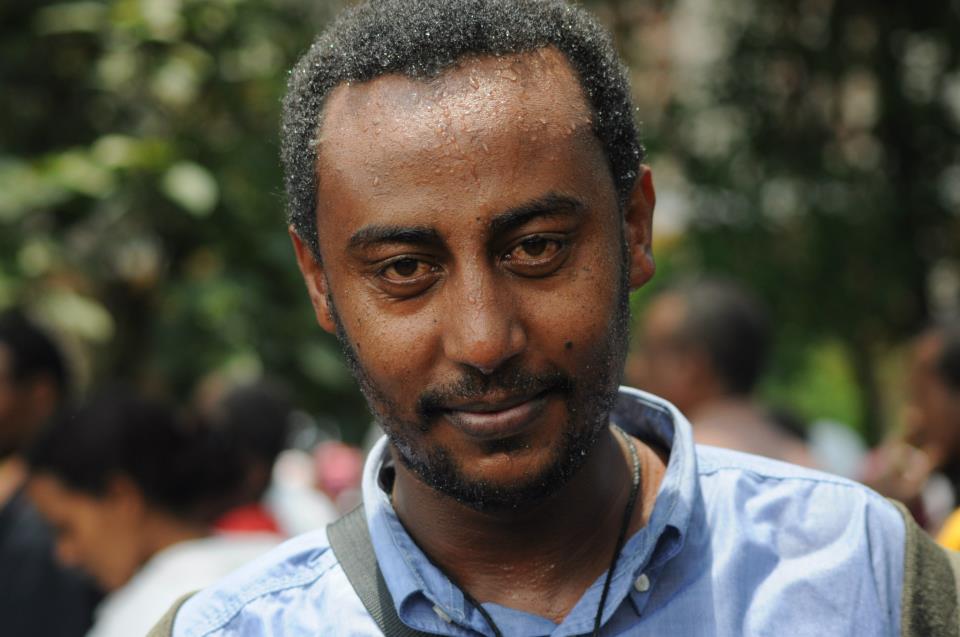At Little Sun, we believe in the power of the arts to raise climate change awareness and help us imagine a more sustainable future in which everyone thrives. This is why we’re delighted to present you Fast Forward, a series of short films created by artists from Ethiopia, Senegal, and the United States and featuring over 300 global voices.
By offering open, intimate dialogue and creating accessible stories, Fast Forward aims to show that global, collectivized action against climate change is possible.
To better understand the motivation of artists to address the global energy crisis through their work, we interviewed Ezra Wube, Ghost of a Dream, Naod Lemma, Jessica Segall, and Selly Raby Kane, all part of the Fast Forward project, and discussed the role of art to light the way toward a more just and sustainable future.
Today, we meet you with Naod Lemma, the artist behind Daregot.
Naod Lemma is a photographer and filmmaker based in Ethiopia. As a child, he grew up in Merkato, a neighbourhood that is also home to a famous street market in Addis Ababa, and this has influenced his work on almost every level. In his projects, he depicts a society going through deep transformations by capturing ordinary, almost invisible details of his city and the way people inhabit it.
Fast Forward’s film Daregot follows a family living off of the electrical grid in rural Ethiopia as they prepare and eat dinner in darkness. Following the meal, Naod screens footage of world leaders discussing climate change and energy poverty. The project demonstrates the stark and unsettling disconnect between decision makers and the people their decisions impact as well as the need to center marginalized communities to create a climate just future.
LS: What motivated you to be part of Little Sun’s Fast Forward project?
Little Sun’s Fast Forward project is a continuation of my portrait photography project “Ordinary Existence” and my interest in multi-channel video and traditional documentary projects, especially my latest short-documentary, “WAX & GOLD,” commissioned by Ethiopia’s national TV, which tells the story of a countryside family affected by the lack of electricity.
LS: Can you describe the main focus of your film?
In the short documentary film project, I explored the paradoxical relationship between decision makers and societies in the lowest structure of the economy, specifically in terms of energy access. This film also foreshadows how seemingly unrelated decisions of global leaders force people to migrate and even enter war.
LS: Why did you choose to explore this subject? Did anything, in particular, inspire you?
My exploration began on this subject in 2014 when I met Ababa Tamru. He was 72 years old and came to the capital Addis Ababa for a better life for his family. We were living together in the same compound for almost two and a half years. During that time I learned how he was amused by almost everything living in the city, especially electric power and information. Tamru always told me how he would have a different life if he had had electric power at his home. He always connected all of his problems with either lack of power or information. After Tamru left Addis Ababa and returned to his family, I would always think of him wherever I traveled in rural parts of Ethiopia.
My other motivation to explore the subject of clean energy was the Ethiopian president Sahle-Work Zewde’s speech at the UN General Assembly. The speech was presented in Amharic language; she stated that her government seeks to provide electricity to the Ethiopian population so that everyone can at least eat supper with light.
LS: What role do you think artists can play in our shift to a regenerative world?
Art is not the only component to create a regenerative world, but the unlimited power of thinking and creativity allows artists to access unorthodox exploration of the conventional world. Artists’ interventions can challenge existing systems, raise questions on power hierarchies, and create new understanding of socio-political issues.
LS: What’s been the highlight of working on this project for you?
Even though I have been working on issues of energy poverty for some time, working on this project opened up a deeper understanding and knowledge of the topic. Compared to my other personal projects, this three minute film project required a different kind of dedication and depth.
Little Sun’s creative input made this project a different experience; I really enjoyed developing ideas through conversation and negotiation. I’m honored to be a part of Little Sun’s Fast Forward project. I would like to express my deepest gratitude to all advisory board members and also the Little Sun team, especially to Alex McClure.
LS: How about the challenges? Were there any unexpected surprises?
Political instability in different regions in Ethiopia made travel for the research and filming difficult. But with the help of locals, it was all possible as planned.
Another challenge was finding Tamru and his family, as I didn’t know where they were living. After a couple of days of searching in the nearest town, I found out where they were; to get to them, I had to travel two and a half hours from the main road on foot, as their village is not accessible to cars. Tamru and his family didn’t know I was coming, so it was an emotional reunion for all of us.
LS: What’s next for you after Fast Forward?
After Fast Forward, I want to continue to explore the connection of the lack of power to migration in my ongoing photography and video installation project “Martyr Oranges”. Otherwise, I want to create a platform that will allow rural communities in Ethiopia to access virtual panels, meetings, and research presentations like COP26 and TED events.
To watch all short films and read more about the Fast Forward artists and advisors, click the button below.


